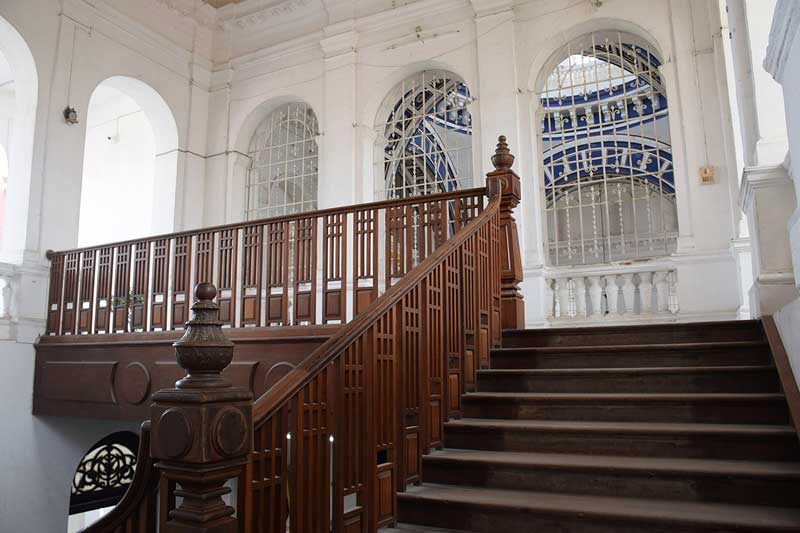
Known for its aesthetic appeal, grandeur and elegance, Cooch Behar Palace, also known as the Victor Jubilee Palace, reflecting a unique blend of European and Indian architecture, is a key attraction and landmark in the city of Cooch Behar in West Bengal, India. Located near the bus terminus along Kesab Road, near the heart of the city, the palace was modelled after Buckingham Palace in London and was built in 1887, during the rule of Maharaja Nripendra Narayan of the reigning Koch dynasty. Locally called the Rajbari for obvious reasons, the palace is an architectural marvel and has an illustrious history and cultural legacy. Built with inspiration derived from classical European styles manifested during the Italian Renaissance period, it has a strong vintage essence, echoing the grandeur of the Koch dynasty.

The majestic Cooch Behar Palace exhibits the acceptance of European idealism of the Koch king Nripendra Narayan, without denouncing his Indian heritage. As the eldest son of Maharaja Narendra Narayan, Nripendra Narayan succeeded the throne after his father’s demise when he was only a year old. Although initially, ruled under a commissioner appointed by the Governor at that time, finally he took control as the ruler in October 1862 and ruled till his death on18 September 1911. The grand Cooch Behar Palace, reflecting the royal blending of the European culture and the Indian heritage, was built 25 years after his ascension to the throne. However, originally the Cooch Behar Palace was a three storey building, which was severely damaged by the devastating earthquake of 1897, whose epicentre was in the neighbouring state of Assam. The present building is the restored structure of what was left of the palace after the devastating catastrophe.

The entrance to the palace is through the main iron gate, bearing the impressive royal insignia of sceptre of the Coach Behar Kingdom, while the two pillars of the gate are topped by the marble statues of an elephant and a lion. The gates open out to a carriageway, leading directly to the palace doors. It is interesting to note that despite the huge palace contains more than 50 rooms, all the rooms on the ground floor were used by the king for administrative purposes, while the entire upstairs was the royal residency.

Covering a huge area of 51,309 square feet (4,766.8 m2), the majestic brick-built double-storey structure of the Cooch Behar Palace is 395 feet (120 m) long, 296 feet (90 m) wide and constructed 4 feet 9 inches (1.45 m) above the ground. The palace is fronted on the ground and first floors by a series of arcaded verandahs or roofed open air porches, with piers arranged alternately in double and single rows. With a porch at the centre, the palace extends to its northern and southern ends, making the entryway to the gorgeous Durbar Hall. The Hall is proudly decorated with Corinthian columns, which offer support to the base of the cupola and also has a magnificent metal dome at its centre. Designed with Renaissance-style architectural cues and carved in stepped patterns, the dome is topped by an elegant cylindrical louvre-type ventilator, standing 124 ft above the ground.

Apart from the Durbar Hall, the Coach Behar Palace contains several other stunning halls, luxurious and exclusive private rooms and rooms for miscellaneous purposes, which include the Dining Hall, Billiards Hall, Royal Bedrooms, Dressing Room, Drawing Room, Ladies Gallery, Vestibules, Library, Toshakhana or Treasure House and others. All the doors of the palace are made of heavy and expensive black mahogany wood with intricate carvings of traditional woodwork.

Surrounded by charming gardens and standing tall and strong with elaborate and extensive balconies on both floors, the Coach Behar Palace, crowned with the shining silvern dome, has now turned into a museum. Displaying an intriguing collection of arms and weapons, originally used by the Koch Dynasty, it has become one of the prominent tourist attractions in West Bengal. The museum also contains an amazing collection of chandeliers, oil paintings, antiques, terracotta figurines, clay models, photographs and even sandstone and laterite sculptures. There is also a tribal gallery, exhibiting the everyday life of the locals in Cooch Behar.

Inducted in the Archaeological Survey of India list of the Monuments of National Importance in West Bengal, Cooch Behar Palace ranks among the top monuments with national importance